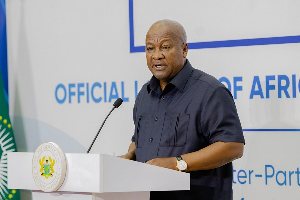During the first quarter of 2020, the Asanko Gold Mine (AGM) sold 67,820 ounces of gold at an average realized gold price of US$1,542/oz. Revenues totalled US$104.8 million, an increase of US$37.8 million from Q1 2019.
The increase in sales proceeds was a function of higher sales volumes and higher average realized gold prices in Q1 2020, the company said.
The AGM incurred operating cash costs per ounce1, total cash costs per ounce1 and AISC of US$599, US$676 and US$805/oz, respectively, in Q1 2020.
The reduction in total cash costs per ounce and AISC from Q1 2019 was primarily due to the impact of higher gold sales volumes which had the effect of decreasing fixed costs on a per-unit basis, a reduction in ore transportation costs associated with trucking ore from Esaase to the process plant and a $41/oz decrease in deferred stripping costs.
Total cost of sales (including depreciation and depletion and royalties) amounted to US$56.4 million in Q1 2020, a decrease of US$22.5 million from Q1 2019.
The decrease in cost of sales was primarily due to a reduction in depreciation and depletion expense following the impairment recorded in Q4 2019 which had the effect of lowering the mineral properties, plant and equipment (“MPP&E”) depreciable asset cost base.
In addition, operating cash costs decreased as a result of a reduction in NRV adjustments to stockpiles. Cost of sales for Q1 2019 also included an accrual for a one-time mining contractor services agreement termination fee. These factors were partly offset by an increase in gold ounces sold in Q1 2020 compared to Q1 2019.
Strong cash flow generation with operating cash flow of $37.0 million ($56.5 million before working capital adjustments), and free cash flow of $27.0 million.
This compares to US$8.8 million of operating cash flow and negative US$5.2 million of free cash flow during Q1 2019.
The improvement in free cash flow was mainly from the increase in income from operations partly offset by an unfavourable change in non-cash working capital.
Working capital investments during the quarter included investments in strategic supply chain interventions with respect to the ongoing COVID-19 pandemic bolstering supplies of key reagents, critical spares and diesel.
As at March 31, 2020, the JV had cash of $55.6 million (including the funds from the fully drawn $30.0 million revolving line of credit), $9.6 million in receivables from gold sales and $0.5 million in gold on hand.
Business News of Monday, 25 May 2020
Source: laudbusiness.com



![New IGP, COP Christian Tetteh Yohonu [L] and immediate-past IGP, Dr. Akuffo Dampare New IGP, COP Christian Tetteh Yohonu [L] and immediate-past IGP, Dr. Akuffo Dampare](https://cdn.ghanaweb.com/imagelib/pics/140/14041582.295.jpg)









